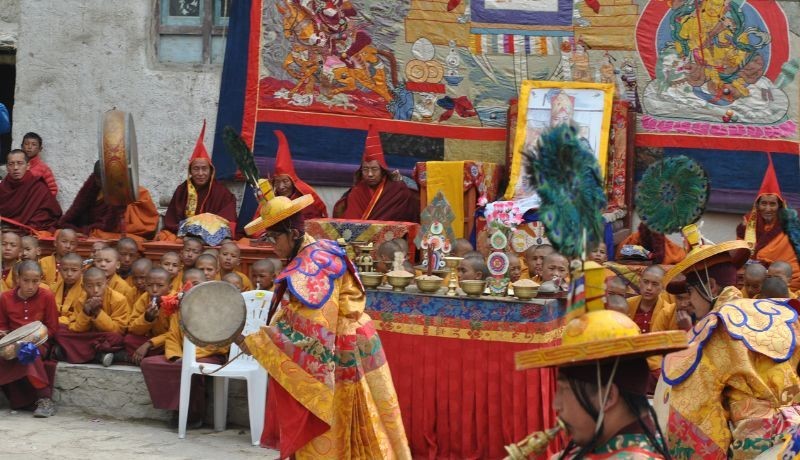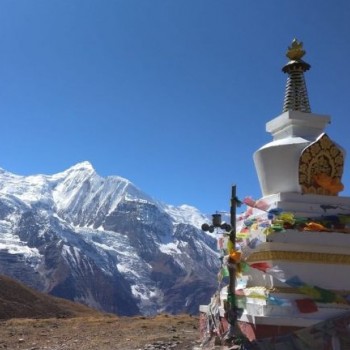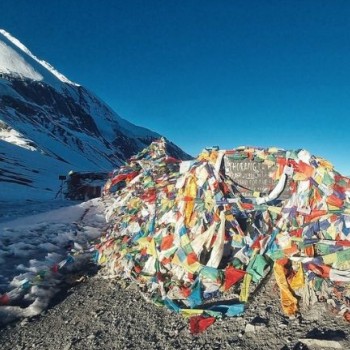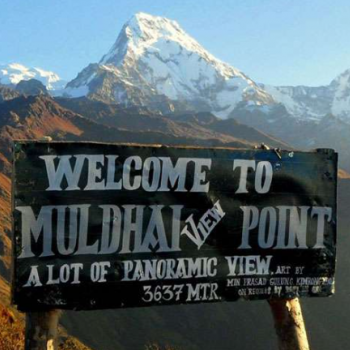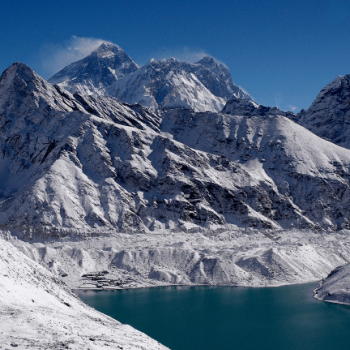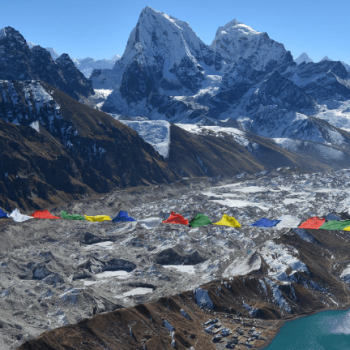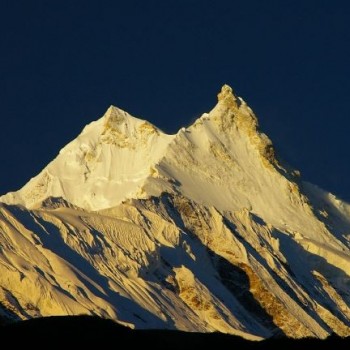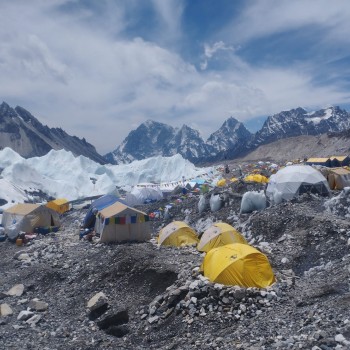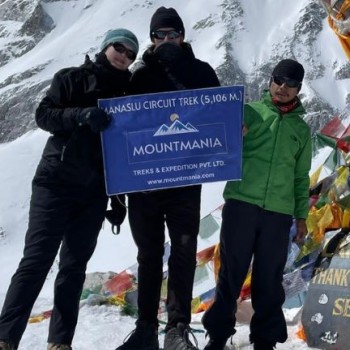Trip Details
Destination: Nepal
Trip Difficulty: Easy
Trip Style: Tour
Transport: Private Vehicle
Food: Breakfast, Lunch & Dinner
Accommodation: Teahouse or Lodge
Group Size: 2-16
Max Elevation: 3800m
Highlights
- Colorful Masked Dances: Spectacular masked dances performed by monks wearing intricate costumes represent various deities and mythical characters, captivating the audience with their vibrant colors and rhythmic movements
- Photography: Given the visual spectacle of the Tiji Festival, enabling participants to capture the festival's magic
- Cultural Symbolism: The festival symbolizes the triumph of good over evil, with the main dance depicting the victory of Dorje Jono, a deity incarnated as a warrior, over the demon Ma Tam Ru Ta
- Traditional Rituals: Alongside the dances, traditional rituals and ceremonies are conducted by the monks, including chanting, prayers, and offerings, adding depth and spiritual significance to the festivities
- Community Participation: Tiji Festival is a community affair, bringing together locals from different villages and ethnic groups to celebrate their shared heritage and beliefs, fostering a sense of unity and camaraderie
- Tourist Attractions: The festival attracts tourists from around the world, providing them with a unique opportunity to witness ancient Tibetan Buddhist traditions and immerse themselves in the cultural richness of the Mustang region
- Scenic Setting: Set against the backdrop of the majestic Himalayas and the barren landscapes of Upper Mustang, the festival offers a stunning visual spectacle, enhancing the overall experience for visitors and participants alike
Description
The Tiji Festival is a vibrant explosion of culture, color, and tradition set against the majestic backdrop of Mustang, Nepal. Known as the "Festival of Hopes," it celebrates the triumph of good over evil and marks one of the most auspicious events in the Tibetan Buddhist calendar. Each year, the ancient kingdom of Lo Manthang transforms into a bustling hub of activity, drawing visitors from around the globe to witness this spectacular three-day event. The Tiji Festival Tour 2025 promises an even more enthralling experience, offering an unparalleled glimpse into the heart of Himalayan spirituality and community life.
Rooted in Buddhist mythology and local lore, the festival commemorates the story of Dorje Jono who battled against his demon father to save the Kingdom of Mustang from destruction. The festivities are marked by elaborate rituals, traditional dances, and a series of ceremonies performed by the monks of the Choedhe Monastery, who don intricate masks and costumes to reenact the epic tale. For travelers, the Tiji Festival Tour is not just a cultural immersion but a journey into the soul of the Himalayas, offering insights into practices and beliefs that have been preserved for centuries.
The 2025 edition of the Tiji Festival is eagerly anticipated, with preparations already underway to make it a memorable experience for both locals and tourists. As the world continues to bridge cultural divides and seek out authentic experiences, the Tiji Festival stands out as a beacon of cultural preservation and unity. Whether you're a spiritual seeker, a culture enthusiast, or simply in search of adventure, the Tiji Festival Tour 2025 is an event that promises to enrich and inspire.
In the following sections, we will delve deeper into the history and cultural significance of the festival, explore the specifics of the 2025 event, and provide practical tips for those planning to attend. Join us as we embark on this journey to the heart of Mustang, where ancient traditions come alive and stories of heroism and faith continue to resonate through the ages.
History and Cultural Significance
The Tiji Festival, also known as "Tenchi" or "Tempa Chirim," is more than just an annual cultural event; it is a living history, deeply woven into the fabric of the Mustang region's identity. Its origins trace back over centuries, rooted in the ancient texts of Tibetan Buddhism, embodying the essence of myth, religion, and community spirit. Understanding the history and cultural significance of the Tiji Festival is essential for appreciating the depth and vibrancy of this extraordinary celebration.
Ancient Origins
The festival is based on a mythological story from the "Buddhist Sutra," which tells of Dorje Jono (also known as Vajrakila or Dorje Phurba), a deity incarnated to defeat the demon father causing havoc in the Mustang region. This demon was said to spread disease, take away water sources, and bring drought to the land. The victory of Dorje Jono is celebrated through the Tiji Festival, symbolizing the triumph of good over evil, and is believed to bring peace, prosperity, and good fortune to the people of Mustang.
Cultural Tapestry
Mustang, once an independent kingdom, has preserved its rich cultural heritage through centuries of isolation. The Tiji Festival is a testament to this enduring legacy, showcasing traditional Tibetan Buddhism in a form that has remained largely unchanged since its inception. The festival is not just a religious event but a social one as well, strengthening communal ties and reaffirming the cultural identity of the Mustangi people.
Monks from the Choedhe Monastery, which practices the Sakya lineage of Tibetan Buddhism, play a central role in the festival. They prepare for months, mastering the sacred dances and rituals that tell the story of Dorje Jono. These dances, known as "Cham," are performed in elaborate costumes and masks, each movement and symbol rich with meaning and intent.
The Heart of Mustang
The setting of Lo Manthang, the walled capital of Mustang, adds to the festival's mystical allure. Surrounded by stark desert landscapes and towering peaks, the city seems untouched by time. The ancient monasteries, palaces, and caves that dot the region are a backdrop to the festival, creating a sense of stepping back into history.
A Global Attraction
While the Tiji Festival is a cornerstone of Mustang's cultural calendar, it has also gained international recognition. Travelers and cultural enthusiasts from around the world are drawn to the festival, eager to witness its unique traditions and rituals. This influx of visitors has brought new challenges and opportunities to Mustang, balancing the preservation of cultural heritage with the benefits of tourism.
The Significance Today
In contemporary times, the Tiji Festival's significance extends beyond its religious and cultural roots. It serves as a bridge between generations, passing down traditions and stories that might otherwise be lost. Furthermore, it highlights the importance of sustainability and environmental consciousness, echoing the mythological themes of harmony and balance with nature.
As we look towards the Tiji Festival 2025, the event is a reminder of the power of cultural expression to unite communities, inspire individuals, and preserve the rich tapestry of human heritage. The festival not only celebrates the victory of Dorje Jono but also the enduring spirit of the Mustangi people, their resilience, and their commitment to safeguarding their way of life against the backdrop of a rapidly changing world.
Tiji Festival Tour 2025 Festival Details
The Tiji Festival Tour promises to be a momentous occasion, attracting visitors from all corners of the globe to the ancient kingdom of Mustang. As we approach this significant event, here are the essential details and highlights that attendees can look forward to.
Dates and Location
The Tiji Festival traditionally takes place in the lunar month of May aligning with the end of the dry season in Mustang. The exact dates can vary, as they are determined by the Tibetan lunar calendar, but the festival typically spans three days. For 2025, the festival is scheduled to take place in May 24, 25 and 26.
The heart of the festival is the walled city of Lo Manthang, the historic capital of Mustang. Lo Manthang's mystical allure, with its ancient monasteries, royal palace, and scenic beauty, provides a fitting stage for the Tiji Festival's vibrant ceremonies and rituals.
Festival Highlights
The Tiji Festival is a feast for the senses, characterized by its colorful processions, traditional music, and intricate dances. Key highlights include:
Monastic Dances
The monks of Choedhe Monastery, adorned in elaborate masks and costumes, perform the sacred Cham dances. These dances narrate the story of Dorje Jono’s battle against evil forces, symbolizing the eternal fight between good and evil.
Rituals and Ceremonies
Various rituals are conducted to purify the city and its inhabitants, drive away evil spirits, and bring blessings for the coming year. The opening ceremony, which includes the unfurling of a giant thangka (religious scroll painting), is particularly awe-inspiring.
Local Festivities
Alongside the religious ceremonies, the festival is a time for social gathering and celebration. Local families dress in their finest traditional attire, and the air is filled with the sounds of traditional music, singing, and laughter.
Special Focus for Tiji Festival Tour 2025
The Tiji Festival 2025 will place a special emphasis on cultural preservation and sustainable tourism. With growing international interest, the organizers are keen to showcase Mustang's rich heritage while ensuring that the influx of visitors does not impact the region's delicate ecological and cultural balance. Special programs, including workshops and talks on Mustang's history, culture, and conservation efforts, are planned to enrich visitors' understanding and appreciation of the region.
Visitor Information
Those planning to attend the festival are encouraged to arrange their travel well in advance, as accommodations in Lo Manthang and nearby areas can fill up quickly. The journey to Mustang is an adventure in itself, requiring a permit and either a trek through the Himalayas or a flight to Jomsom followed by a journey overland to Lo Manthang.
Tour Experience
Embarking on the Tiji Festival Tour is not just about witnessing a cultural event; it's an invitation to immerse oneself in the spirituality, heritage, and natural beauty of Mustang. The tour typically encompasses several key experiences:
Trekking Through the Himalayas
Most tours include Tiji treks through the stunning landscapes of the Annapurna and Mustang regions, offering breathtaking views and a chance to experience the Himalayan environment and lifestyle up close.
Cultural Immersion
The tour offers unparalleled access to local traditions, with opportunities to interact with the monks of Choedhe Monastery, visit ancient monasteries, and learn about local customs and lifestyles.
Exploration of Lo Manthang
Time is allocated for exploring the city itself, with guided tours of its monasteries, palaces, and surrounding archaeological sites, providing insights into the region's rich history and cultural heritage.
Embarking on a Tiji Festival Tour is an opportunity to step beyond the ordinary, into a world where ancient traditions and breathtaking landscapes converge. It's an experience that promises not only to inspire but to transform, leaving an indelible mark on the hearts of those who witness it.
Travel Tips
Attending the Tiji Festival in Mustang is an adventure that requires careful planning and preparation. To ensure a memorable and smooth experience, here are essential travel tips for those planning to embark on this incredible journey.
Secure Necessary Permits
Mustang is a restricted area, and travelers need a special permit to enter. These permits are typically arranged by tour operators as part of the tour package. Ensure your tour includes this service to avoid any legal issues upon arrival.
Plan Your Journey Early
Given the festival's popularity and the limited accommodations in and around Lo Manthang, it's crucial to book your tour well in advance. This not only secures your spot but often guarantees better rates and a more comprehensive experience.
Prepare for High Altitude
The journey to Mustang involves trekking at high altitudes. Acclimatization is key to avoiding altitude sickness. Ensure your itinerary includes sufficient time for acclimatization and consider pre-trip physical preparation to enhance your endurance.
Pack Appropriately
Weather in Mustang can be unpredictable, with cold nights and strong winds, even in May. Pack layers, including a good quality down jacket, windproof outer layers, and thermal underwear. Also, bring a sturdy pair of hiking boots, a sleeping bag rated for cold temperatures, and a daypack for daily excursions.
Respect Local Customs
Mustang is deeply traditional. Show respect for local customs and religious practices. This includes dressing modestly, removing shoes before entering monasteries, and asking permission before taking photographs of people or religious sites.
Embrace Sustainable Travel Practices
The delicate ecosystem and cultural heritage of Mustang require mindful travel practices. Follow the principles of Leave No Trace, dispose of waste properly, and consider contributions to local conservation efforts. Supporting local businesses and purchasing local products also helps sustain the community.
Health and Safety
Ensure you have comprehensive travel insurance that covers high-altitude trekking and medical evacuation. Bring a personal first-aid kit, including medication for altitude sickness, and stay hydrated to combat the dry, thin air.
Cultural Etiquette and Participation
Engage with the festival and local community with an open heart and mind. Participating in communal activities, showing interest in local traditions, and approaching the experience with humility and respect will enrich your visit and foster meaningful interactions.
Stay Connected Wisely
While the remote nature of Mustang offers a break from digital connectivity, ensure you have a way to communicate in case of emergencies. Renting a local SIM card in Kathmandu or carrying a satellite phone can be helpful. However, use technology respectfully, especially during the festival's sacred ceremonies.
Be Prepared for Basic Facilities
While some guesthouses and lodges offer comfort, facilities in remote areas of Mustang can be basic. Prepare for simple accommodations, limited hot water, and traditional squat toilets. Embrace these aspects as part of the authentic experience of visiting a region largely untouched by modern conveniences.
Cultural Etiquette and Sustainability
Visiting Mustang during the Tiji Festival offers a unique opportunity to immerse yourself in a rich cultural tradition. However, it also comes with the responsibility to approach the experience with respect and mindfulness.
Cultural Respect
Understanding and respecting local customs is crucial. This includes participating in local traditions only when invited, dressing conservatively, and being mindful of your impact as a visitor. The people of Mustang are proud of their heritage, and showing respect for their customs and way of life is essential for a harmonious visit.
Sustainability Efforts
Sustainability is a growing concern in regions like Mustang, where the environment is fragile, and resources are limited. Travelers can contribute positively by minimizing their ecological footprint—using water sparingly, avoiding plastic, and carrying out all waste. Additionally, engaging with and supporting local conservation initiatives can have a lasting positive impact on the region.
The Tiji Festival Tour 2025 is more than just a trip; it's a deep dive into the heart of Himalayan culture, spirituality, and community life. It offers a rare glimpse into a world where ancient traditions are not just remembered but vibrantly alive. This festival is a celebration of the triumph of good over evil, a testament to the resilience of the human spirit, and an invitation to explore one of the world's most remote and fascinating regions.
For those fortunate enough to attend, the Tiji Festival in Mustang is not merely an event to be observed but an experience to be lived. It is an opportunity to connect with a culture that has maintained its traditions against the odds, offering lessons in sustainability, community, and spiritual perseverance. As we look forward to the Tiji Festival 2025, let us approach it not just as tourists, but as respectful guests, eager to learn, share, and contribute to the preservation of this extraordinary cultural treasure.
Whether you are drawn by the call of adventure, a passion for culture, or the spiritual journey, the Tiji Festival Tour 2025 promises an experience that transcends the ordinary, leaving an indelible mark on your heart and soul. So, pack your bags, prepare your spirit, and set forth on a journey to the ancient kingdom of Mustang, where legends come to life, and the beauty of humanity shines brightest against the backdrop of the Himalayas.
Whether you're a seasoned traveler or embarking on your first cultural expedition, this festival is a beacon for those seeking depth, meaning, and connection in their journeys. We hope this blog inspires you to explore the vibrant traditions and breathtaking landscapes of Mustang, offering an unforgettable adventure into the heart of the Himalayas.
FAQs
What is Trekking, and how it is different than Hiking and Climbing?
Trekking is an activity of walking the natural landscapes (especially the side of the mountain) with a specific purpose of exploring and enjoying the scenery. Trekking is generally a multi-day walk, where you stay overnight at trails.
It tests the trekker's physical ability, stamina, endurance, and also the psychological capacity. Trekking is different from hiking as trekking is a rigorous and challenging activity, whereas hiking is mainly a leisure activity. Hiking generally ranges from a single day walk.
Climbing, on the other hand, is a much more challenging that requires various technical skills like abseiling, rope fixing, among others. A climber is much riskier requires specialized equipment, as well as rigorous training.
How many hours should I walk daily?
The trekking hours depend upon the trekking routes you choose. In general, a trek like Everest Base Camp, Annapurna Circuit, Manaslu Circuit, Annapurna Base Camp, Kanchenjunga treks requires five to six hours of walking on average. The duration also depends on your pace too.
It is not advisable to trek more than 600m altitude in a day. Starting your trek early is key to avoiding the midday heat and arriving at your destination early. This leaves you enough time to rest, acclimatize, and explore the region.
How difficult is trekking in Nepal?
The level of difficulty depends on the trekking route such as Everest region treks, Annapurna region treks, and other remote area treks. It is also subjective to each individual and their level of endurance. A basic level of fitness is necessary to trek the high altitude region of Nepal with considerably challenging trails.
Also Read: Manaslu Circuit Trek Difficulty
Some regular exercise, including cardiovascular activities including but not limited to hiking, cycling, swimming, is a must. Trekkers must have a healthy heart, lungs, and joints. You must start the training regime at least two weeks before the trek.
Is Trekking recommended for all age groups of travelers?
Trekking in Nepal is ideal for all age groups. Trekking can be fun for children as well as for people in their seventies. You can choose the trek based on the difficulty level and suitability.
However, with children, you need to be extra careful in the high altitude regions as they cannot express their pain and fatigue properly. For older people, treks can get customized with accommodating enough rest, acclimatization, and cultural exploration.
You can opt for Ghorepani Poon Hill trek, as it is one of the most popular easy treks in Nepal. This trek is suitable for all age groups with children and family as well.
Also Read: Top 10 Best Short Treks in Nepal
What is the minimum duration for trekking?
The minimum duration of trekking depends upon the trek destination and trail type. There are many treks that last around 3-8 days.
These treks are short and specially designed for beginners. The trek journey can get modified by increasing or decreasing the rest and acclimatization days.
Do I need to get some training before doing trekking in Nepal?
Yes, it's better to get some training before doin trekking in Nepal. The training should consist of practice hikes, cardiovascular endurance (aerobic exercise), strength training, and mental strength exercises.
What are the basic tips for beginner trekkers who don’t have any experience?
The essential tips for beginners trekkers who don't have any experience are:
- Walk at a slow but steady pace
- Do not rush in your trek
- Acclimatize and hydrate regularly
- Pack all your necessities properly
- Start early on your trek
- Pre-book your trip
How safe is the water to drink?
The tap water in Nepal is unsafe to drink. The trekkers need to boil their water, use water purification tablets, or bottled water. In high altitude conditions, you need to boil water longer than at lower elevations.
If you choose to carry or buy bottled water, you should always check if the bottle cap is properly sealed and not tampered. Water purification tablets and drops like Piyush, Water guard use chlorine solution to purify waters.
You can use any of these methods and drink lots of water to reduce dehydration and cope with altitude sickness.
Where are we staying each night during trekking?
Nepal is famous for the teahouse treks. There are tea houses, lodges, guest houses all along the trails. You will stay at these accommodations each night on your trekking adventure.
These accommodation facilities provide twin beds, a pillow, and a warm fuzzy blanket. You might find it challenging to find proper accommodation facilities along with the remote off the beaten treks. You might have to camp in such conditions.
What is Teahouse Trekking Nepal?
The teahouses trekking means staying in a teahouse or lodge every night in your trekking journey. The tea houses offer necessary facilities of lodging and meal and allow trekkers to carry a minimum amount of gear.
A teahouse can range from comfortable lodges, like in the Solu Khumbu region to a small bamboo hut in the remote trails of western Nepal.
Which are the permits required for trekking? Can I apply as an individual?
A TIMS (Trekkers’ Information Management Systems) card is a necessary trekking permit required for any trekking activity in Nepal. Besides that, you will need area-specific trekking permits at varied costs based on the region.
For example, you will need an ACAP (Annapurna Conservation Area Permit) if you want to do the Annapurna Circuit trek permit and a Sagarmatha National park permit for the EBC trek. You can get the TIMS card and other area-specific permits at the office of the Nepal Tourism Board office in Kathmandu.
Is Travel Insurance compulsory while you travel to Nepal?
Yes, travel insurance is compulsory for all travelers traveling to the region. You must get an excellent travel insurance package that covers both the medical and emergency evacuation cost. A travel insurance package of a minimum of USD 100,000 is ideal.
What if I get sick in the mountains?
When trekking in the remote mountain areas, you will only get elementary medical facilities available or none at all. You can find the Himalayan Rescue Association (HRA) health posts run by western volunteer doctors at Pheriche and Manang in the Everest and Annapurna region, respectively.
The doctors provide consultation and services if necessary. If you get severely ill or accidents, then you might as well need a helicopter evacuation back to Kathmandu or Pokhara.
How high is the chance to get altitude sickness? How will a guide help?
The chance to get altitude sickness is exceptionally high in these Himalayan regions. A guide will help you to acclimatize appropriately, which is a crucial step to avoid altitude sickness. The guide can also help you to recover in case you get altitude sickness or with any emergencies.
How to avoid altitude sickness?
The primary key to avoid altitude sickness is to acclimatize properly. You should not gain more than 600m in altitude in the high altitude regions. Expert trekkers advise to take it slow and not to trek in a rush.
Regular hydration with at least 5 liters of water is a must. You can also take precautionary tablets under the supervision of a medical professional if needed.
Why is the domestic flight specially to and from Lukla or Jomsom delayed?
The domestic flight to and from Lukla gets delayed frequently due to unfavorable weather conditions. The weather around the high altitude regions is quite unpredictable.
Lukla airport is also one of the smallest airports in the world. The short runway means that multiple flights cannot land at the same time and can even cause unwanted delays.
Who will carry my backpack?
You can hire a porter for the high altitude trek. They will carry all your luggage that might include your trekking and sleeping equipment. Hiring a porter significantly reduces the weight off your back.
You can carry a light daypack consisting of water, a camera, snacks, and rain gear. The heavy luggage will get carried by a porter. Some guides work as porters, as well.
What are the food items that we can eat in the teahouse?
For breakfast, the tea houses provide a regular bread toast along with hot tea or coffee. For lunch and dinner, the staple dish of “Dal Bhat” gets served on the tea houses. The Dal Bhat is highly nutritious, with a balance of carbohydrates and protein.
It consists of if rice, cereal, vegetables, lentils, spinach, meat, and pickles. Some tea houses do serve a limited variety of western cuisines like pizza, burgers, and pasta, as well.
What are the services that we get from each teahouse?
The tea houses provide lodging and meal facilities. They provide a twin bedroom with a pillow and a fuzzy blanket. You will have to share a shared bathroom with fellow trekkers. The toilets are generally of squat style.
Besides that, you will get all the meal facilities in the tea houses as well. You can get all the meals of the day i.e. breakfast, lunch, and dinner in the tea houses. The food might not be fancy but provides you with excellent nutrition and adequate energy for the trek.
How safe is Nepal for solo woman traveler?
Nepal is generally safe for women travelers. The Nepalese society is quite conservative and has a specific idea of modest clothing. Dressing modestly by covering thighs and shoulders will save you from unwanted gaze on the streets.
Female travelers should not travel alone, especially at late nights. You should also choose your guide wisely after a thorough background check. If you keep these things in your mind, you will remain safe while traveling in Nepal.
How much money should I bring for trekking?
A general estimate of $25 per day per person on average would be enough for trekking in Nepal. The food and accommodation costs are generally paid upfront and costs around $2 - $3 per bed. This also includes the food costs that are available provided in the teahouses.
If you wish to take hot water showers or recharge electronic gadgets, it might cost you a couple of bucks more. If you are a budget traveler, spending frugally might get the costs down to $15. Overall, the rough estimate of $25 is ideal for the trek.
Are there any ATMs on the way to trekking routes?
There are no ATMs along the trail in the high altitude region. The last ATM can is in Namche and Lukla if you are trekking the Everest Base Camp region. You will have to use the ATM in Kathmandu and Pokhara and carry the necessary cash along with you in the trek.
How much weight can one porter carry?
A porter generally carries 10kg per client, and they carry for two clients, which means they can carry a maximum of 20kg. However, it is advisable to reduce the amount of luggage and only take the necessary ones.
How many tips should we give to guide and porter?
The general unwritten but widely followed rule is to tip 15 percent of the total cost spent trekking. If you are trekking solo, the rule of thumb is to tip $5 per day or equivalent for guides and $2 to $4 per day or equivalent for porters.
For group trekking, you can tip $10 per day for guides and $5 per day for porters. You can also tip as you wish based on the weight carried and the service provided.
What are the best seasons for trekking in Nepal?
The best time for trekking is the Spring (March to May) and Autumn (September to November). During spring, wildflowers, including rhododendrons bloom all over the trails. The clear skies and stable weather is the major attraction of the trek.
The autumn months of September to November is famous for its soothing climate and favorable temperatures. In addition to these perks, autumn is also a festive season with vibrant festivals Dashain and Tihar falling at this time of the year.
The monsoon and the winters are generally avoided because of the risks and the challenges.
Also Read: Best Time to Visit Nepal
What are the basic criteria for physical fitness?
Many people assume that they need to have an athletic strength to complete treks in Nepal, which is not true. A basic level of fitness with good stamina can easily lead you to success in the trails of Nepal.
Some cardio (aerobic) exercises, including hiking, cycling, swimming, tai chi, etc. can help you gain fitness before the start of your trek. One important thing to consider is that the treks are not a race, so you need to maintain a gentle pace with sufficient breaks and acclimatization.
If your fitness levels are on the higher side, you will enjoy the treks more and find more energy for extra activities.
Can I do trekking solo without a guide and porter?
Yes, you can trek solo in Nepal without a guide or a porter on many routes. If you come well prepared with a map or traveling a well-trodden path, you can trek pleasantly in solitude.
However, some restricted trails like Manaslu Circuit Trek do require a guide by compulsion. But there are risks of traveling without a guide mostly related to health issues and freak weather conditions.
Also Read: Manaslu Circuit Trek Without Guide
Can you list out the packing list for trekking?
The packing list for trekking in Nepal are as follows:
Clothing
- Trekking pants and jackets
- Rainproof pants and jackets
- Thermals underwear
- Pair of Gloves
- Short-sleeved trekking shirts
- Long-sleeved trekking shirts
- Woolen cap/ beanies
- Insulating jackets
- fleece-lined jacket
- Lightweight Sweaters
- Trekking boots
First Aid
- Band-aids
- Anti-nausea Medicines
- Sanitary pads/ Tampons
- Mosquito repellent spray or ointment
Toiletries
- Toilet Paper
- Shampoo
- Soap
- Sunscreen
- Hand sanitizer
Accessories
- Cameras
- Water Bottle
- Sleeping bag
- Sunglasses
- Chargers
- Extra Batteries
Important Documents
- Passport
- Photo
- Travel Permits
Can I recharge my camera batteries, phone, and other electronic batteries?
Yes, there are facilities for charging electronic gadgets like cameras, phones, and other electric batteries at an added cost. However, the charges are on the higher side, and charging time gets limited. Hence, carrying a solar-powered charger or power bank is a good option.
Can I get trekking gears and equipment on rent?
Yes, you can get any trekking gears and equipment on rent. The famous street of Thamel in Kathmandu is popularly known as “backpacker’s alley.” You can get all kinds of trekking gears and equipment, including sleeping bags, down jackets, trekking boots, for rent.
There are many gears of knock-off brands that work surprisingly well. But you should always stay away from substandard stuff that might cause you nuisance along the trek.
Is laundry services available in teahouse?
There are a few laundry services available in places like Namche. However, in the high altitude region, these facilities get scarce. You will have to wash your clothes on your own in the sink. You can use a small amount of warm water to wash your clothes.
What is the weather like in Nepal?
There are five distinct seasons in Nepal. The summers are hot and wet, and the monsoons are wet with chances of landslides. The winters are cold with freezing temperatures in the high mountains. These seasons are not the best time to trek the region.
The peak trekking seasons in Nepal are the autumn and the spring season. The autumn months come after the monsoon, and thus trekkers can enjoy the stable weather with perfect trekking temperatures.
The spring is when the trails look its best. The beautiful wildflowers, including rhododendron bloom all over the trails and the scenic environment, makes the trek quite pleasant.
What types of trekking shoes or boots do I need to bring?
You will require waterproof, sturdy hiking boots for trekking the Himalayas in Nepal. There are various shops in and around Thamel in Kathmandu that lets you buy or rent specialized trekking shoes.
Trekkers do not necessarily require crampons, but if you are trekking on a snowy trail, crampons fitted trekking boots helps you get past the snow with ease.
How will the travel company solve the problem in case of an emergency?
The guides and porters are adequately trained and skilled in handling emergencies. The travel agency is in communication with the team leader at all times through a mobile or a satellite phone.
You will get immediate first aid and all necessary help if required. Helicopters are at standby positions in case the conditions get worse, and you need an emergency helicopter evacuation.
Are there any other outdoor activities besides trekking in Nepal?
Nepal is an adventure-lovers delight. There are many outdoor activities, including bungee jumping, paragliding, zip-lining, rafting, rock climbing, canoeing, jungle safari, and others in Nepal. You can choose the best one according to your desire and schedule.
How expensive or costly is to do trekking?
While the cost may vary according to the trails, in general, the cost of trekking ranges around $1000-$2500 on average, excluding the international flight costs. This cost includes food, accommodation, permits, guide/porter, and other fees.
Which were the trekking routes damaged by an earthquake in 2015?
The popular routes Annapurna Base Camp trek and the Everest Base Camp trek was not much affected by the earthquake in 2015. However, the pristine Langtang and Manalsu trekking region were severely affected.
The landslide after the earthquake swept away many teahouses in the Langtang region, and more than 300 lives were lost. The quick rebuilding process led by the local community ensured that all the trekking routes get restored and repaired immediately.
These trails are safer than ever for a trekking adventure. Trekking has since resumed in the Langtang region.
Where the most popular places to do trekking in Nepal?
There are many trekking trails in Nepal. Some of the famous trekking trails include the Everest Base Camp Trek in the Everest region. The Annapurna Circuit trek in the tranquil Annapurna region is also quite popular.
The Upper Mustang trek, Manaslu trek, Langtang trek are also quite popular. Besides these, many off the beaten trekking routes are gaining popularity as well.
Does my guide carry a simple medical kit for general treatment?
Yes, the professional guides do carry a simple medical/ first aid kits. They are well trained and are adept at performing simple first aid if necessary. However, if the condition worsens, you will need professional medical help or even evacuation.
Do I need to carry a sleeping bag or not?
Although a warm blanket gets provided at the teahouses, carrying a sleeping bag is always a good option. The trails can get busy, and in freezing conditions, a single blanket might not be enough, and an extra blanket might not be available. Hence, a sleeping bag helps you get a good night's sleep after a long day of the trek.
What is the basic equipment do I need to bring for trekking?
The essential equipment you need to bring for trekking includes standard trekking gears and clothes, first aid kits, toiletries, and other accessories. The trekking gears and clothes include waterproof trekking jackets, sturdy boots, waterproof pants, gloves, and others.
For first aid, you can pack band-aids, insect repellents, anti nauseant tablets, etc. You can also bring other accessories like a camera, charger, power banks, and others.
Should I bring a tent or a mattress?
Since you will be staying in tea houses along the trek, a tent or a mattress is not necessary. The tea houses along the trail provide the facilities of bed, mattress, and blankets.
However, if you wish to camp outside or want to trek the off the beaten remote trails, then you might need to bring your tent or mattress as the tea houses are scarce in these remote regions.
Where can I leave my personal stuff in Kathmandu when I am trekking?
You can leave your stuff in the guest houses and hotels where you will be staying in Kathmandu. These guesthouses have a unique service designed for trekkers who need to store their belongings while they go on a trek in the Himalayas.
You can ask the caretaker to handle your backpack with care and also put up a large and visible name tag on the bags to avoid misplacement. The guesthouses readily agree to store your stuff as they can serve you further after your return from the trek.
How experienced is my trekking guide?
All our guides have been around the trekking scene for quite a while and are highly experienced. They are well equipped with proper knowledge regarding the trails and are quite pleasant and friendly.
In case of any emergencies, the guides will prove to be a great helping hand as they are well versed in first aid. Many of them are fluent in English and other languages like French and German.
Are guides and porters insured in case of accidents while trekking?
Yes, all the guides and porters are duly insured with proper insurance in case of any accidents while trekking.
Do guides and porters have proper gears?
Yes, guides and porters are well equipped with proper gear for the trek. The guides and porters are also provided with special medical/ first aid kits for emergency conditions.
Should I bring my personal medicine?
If you need to have certain medicines regularly, then you should bring your medicines on the trek. Besides that, you should also consult your doctor for any medication that you might need along the trek.
Do I need extra days in case of flight cancellation?
Adding a couple of days to your holidays is always a good idea. The flights in the Himalayan region are notorious for frequent delays or even cancellation based on the unfavorable weather conditions. A few additional days to your trekking adventure ensures that you can relax and trek without any hassle.
What is the visa cost for Nepal?
The new provision states that foreigners visiting Nepal on a 15-day multiple-entry tourist visa will have to pay $30 in fees. For a 30-day multiple-entry tourist visa, the cost is $50. The 90-day visa multi-entry tourist visas cost around $125.
Read More: The Complete Nepal Visa Guide
Can I apply for the Nepal visa online?
Although most of the tourists apply for a visa on arrival, you can apply for the Nepal visa online in advance, as well. You can apply for the Nepal visa at most 15 days ahead of arrival in Nepal. The things required are the address of the hotel, a recent digital version of a passport-sized photo, and the filled application form online.
Once you complete the submission process online, you can print out the confirmation receipt. You can display it to the Immigration officer upon your arrival at the airport and pay the proper amount to get your visa.
For further questions, please chat us online or contact us. We will get back to with answers as soon as possible.

